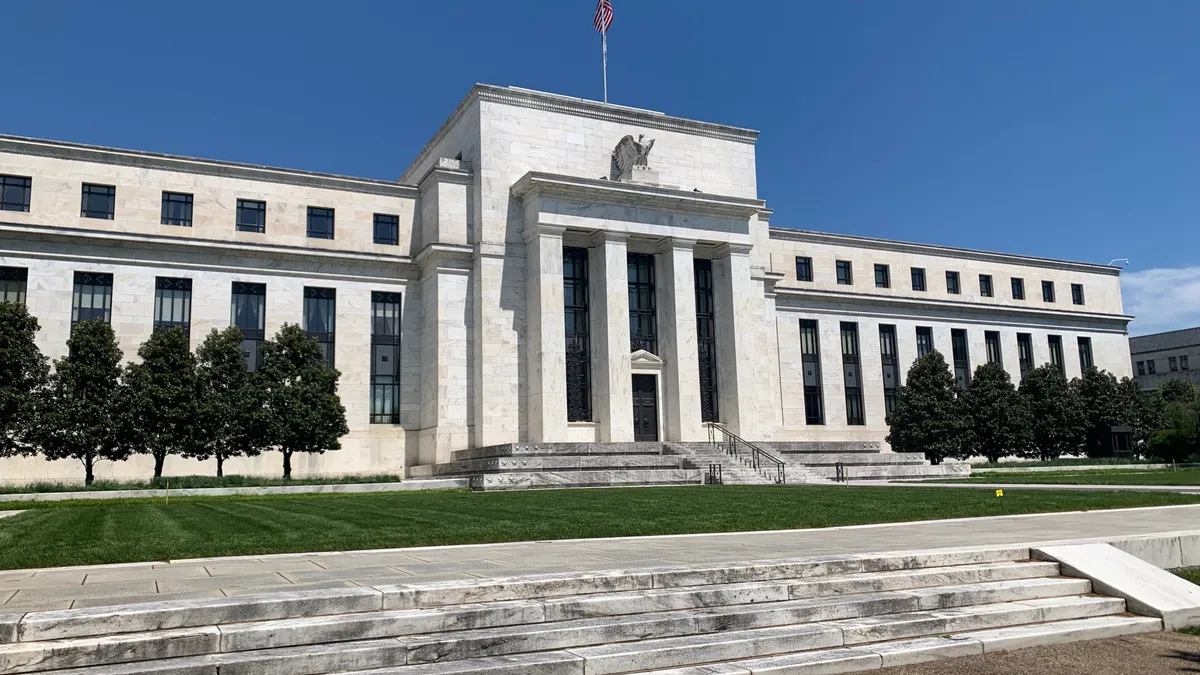Dive Brief:
- Almost exactly one year after the Federal Reserve announced it was creating a real-time payments system, Fed Gov. Lael Brainard gave an update on the program and released new details.
- The Fed board approved FedNow’s "core clearing and settlement functionality," to include a focus on "uninterrupted 24x7x365 processing," Brainard said.
- The central bank looks to roll out FedNow in phases to hasten its arrival on the market. The target launch date remains 2023 or 2024, but the central bank wants the system operational "as soon as practicably possible," it said in a 50-page notice released Thursday.
Dive Insight:
The Fed committed last year to a real-time payments system as clamor reached a fever pitch over Facebook’s effort to develop a cryptocurrency, Libra. With Libra seen as less of an immediate threat to the payments status quo, the Fed used the coronavirus pandemic as motivation to innovate quickly.
"The rapid expenditure of COVID emergency relief payments highlighted the critical importance of having a resilient instant payments infrastructure with nationwide reach, especially for households and small businesses with cash flow constraints," Brainard said in a press release Thursday.
To that end, the Fed wants to make fund transfers possible after hours, on weekends and on holidays.
"Waiting days for the funds to be available to pay a bill can mean overdraft fees or late fees that can compound, or reliance on costly sources of credit," Brainard said.
The Fed will develop a liquidity management tool that lets a participating bank with excess funds in its Federal Reserve account transfer that money to another participating institution that needs it.
Participants in a private-sector instant payments service will be able to use the tool to transfer funds from their Federal Reserve accounts to the joint account at a Reserve Bank that backs settlement in that service, the Fed said.
The central bank stressed interoperability with payments systems such as The Clearing House’s RTP network, which counts 29 participating financial institutions reaching 53% of demand deposit accounts in the U.S., according to Forbes.
FedNow would "expand but also strengthen the U.S. payment infrastructure" by operating alongside RTP, Brainard said. "The presence of more than one service provider also brings the efficiency benefits associated with competition," she said, citing analysis from the Government Accountability Office.
The Fed said it was open to collaborating on a system in which FedNow participants can exchange messages with private-sector instant payment service operators.
"The form and timeline for achieving interoperability will depend on the level of commitment and engagement from stakeholders across the industry, including the operators of other instant payment settlement services, both present and future," Brainard said.
FedNow also aims to support alias-based payments, whereby a recipient can use an email address or phone number, rather than requiring an account number, to receive payments.
Brainard also emphasized the Fed’s focus on fraud tools. "Upon implementation, banks will be able to proactively set parameters that limit transaction activity in the FedNow Service based on banks' knowledge of their own customers," she said. "As we gain insights from banks' experience with the initial set of fraud tools, we will explore other tools that may be valuable, including centralized monitoring by the FedNow Service."
More features will be added to FedNow based on additional stakeholder engagement, the central bank said.
The Fed’s commitment to a real-time payments system came, in part, in defense of smaller banks, some of which may not have the resources to join a private-sector system. Larger banks, which have poured millions of dollars into the development of The Clearing House's RTP system, say FedNow may slow innovation by duplicating effort.
FedNow gained momentum as it appeared other private-sector companies such as Facebook would establish competing payment systems. Facebook’s Libra project began to unravel last fall when several backers, including Visa, Mastercard, eBay, Stripe and PayPal, withdrew. Facebook in March announced it no longer intended to make the blockchain-based token the centerpiece of the Libra project. Rather, the tech giant would support existing government-backed currencies, such as the dollar and the euro, and eventually add its own token.














